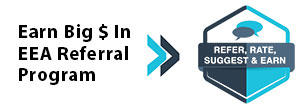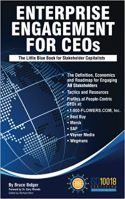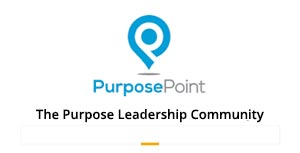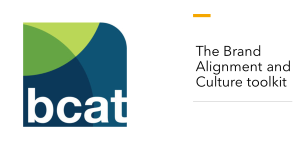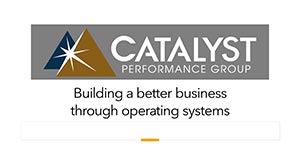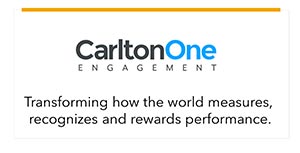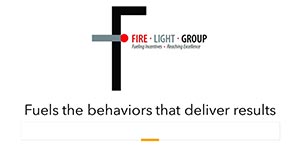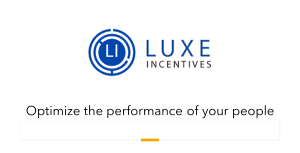Why Itís Time to Help Organizations Measure Engagement Impact
By Bruce Bolger
The State of Impact Measurement: Early Stage
Based on Proven Principles Proven Daily in Manufacturing
How You and Your Organization Can Benefit
What is low productivity, quality, service, or stakeholder engagement costing your organization or clients? The Enterprise Engagement Alliance and its affiliate International Center for Enterprise Engagement can help you find out. The process is based on the same principles that have transformed quality in manufacturing—a strategic, systematic and holistic approach to achieving a purpose, goals, and objectives through people. The failure to answer these questions or the opportunity to address them helps explain why the IRR and related engagement technology field is a fraction of the size of the fields of customer relationship management, accounting, enterprise resource management, or related technologies. Engagement in almost all its forms remains mainly a nice to have.
For those in the incentive, recognition, reward or broader engagement marketplace, the ability to measure impact is critical. The lack of tangible value
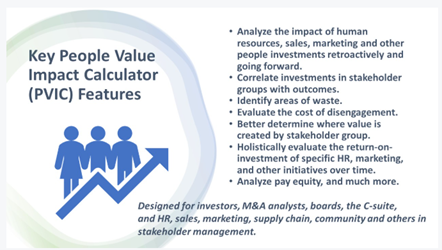 creation is the underlying reason the industry has never achieved its potential, even though research provides compelling support for the potential value created by having highly engaged stakeholders. Not one company in the field has gone public nor achieved by ordinary measures the status of unicorn, and many if not most have left outside investors with disappointing results.
creation is the underlying reason the industry has never achieved its potential, even though research provides compelling support for the potential value created by having highly engaged stakeholders. Not one company in the field has gone public nor achieved by ordinary measures the status of unicorn, and many if not most have left outside investors with disappointing results.The only way to convince CEOs of the value of engagement is to prove how it affects their own bottom lines and stakeholder experiences. Each year Gallup reports the enormous cost of US disengagement—upwards of $400 billion—a blip in relation to the size of the US economy and apparently in the eyes of many executives as well. To most CEOs and C-suite executives, what matters is what disengagement costs their own organizations in waste and poor experiences.
The problem is: they do not know. Here is a list of the most common ways organizations waste money.
The EEA provides individual practitioners, solution providers, and organizations with the knowledge and tools needed to calculate what disengagement is costing their organizations or what engagement is earning them in terms of enhanced performance and better stakeholder experiences. The tools include proven ways to enhance stakeholder engagement in measurable ways, either on their own or using the services of the International Center for Enterprise Engagement, or eventually other professionals or service firms trained and equipped to do the job.
The State of Engagement Impact Measurement: Early Stage
How do we know that CEOs and other executives remain unconvinced that investments in engaging their stakeholders or that programs such incentives,
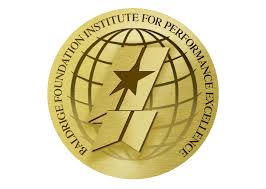 recognition, loyalty, promotion, or motivational events and related programs can have a material impact on their bottom lines? Most programs I read or hear about directly from organizations fail to live up to the basic effective practices established by the EEA and industry organizations or of those proven for decades now in total quality management. Most incentive, recognition and promotional generally are run by middle-level management with no training in engagement or motivation, often redoing what has been done year after year and/or without serious return on investment analysis. Rarely do organizations publicize their engagement activities, such as they do in advertising, event marketing, or technology. What are they ashamed of?
recognition, loyalty, promotion, or motivational events and related programs can have a material impact on their bottom lines? Most programs I read or hear about directly from organizations fail to live up to the basic effective practices established by the EEA and industry organizations or of those proven for decades now in total quality management. Most incentive, recognition and promotional generally are run by middle-level management with no training in engagement or motivation, often redoing what has been done year after year and/or without serious return on investment analysis. Rarely do organizations publicize their engagement activities, such as they do in advertising, event marketing, or technology. What are they ashamed of?Millions of dollars of research; trillions spent on employee engagement, experiences, rewards, and recognition, or loyalty for customers and channel partners have not yielded one notable improvement in customer or employee engagement, according to the latest Gallup and American Customer Satisfaction Index figures. The reason is that most organizations simply haven’t made the connection of these macro trends to their own organizations.
After spending decades supporting research demonstrating the connection between stakeholder engagement, experiences, and sustainable achievement of an organization’s purpose, goals, and objectives, the focus must be on helping management understand the impact on their own organizations. Unless data helps them visualize the impact of disengaged customers, employees or other stakeholders or the positive impact of efforts that enhance productivity, quality satisfaction, safety, in a measurable way, it’s easy for CEOs to view any such efforts as a cost of doing a business.
Based on Proven Principles Employed Daily in Manufacturing
The Enterprise Engagement Alliance’s enterprise engagement framework is nothing revolutionary. It is based on the same principles successfully applied
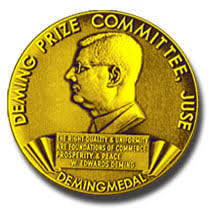 around in the world in manufacturing and research facilities: a strategic and systematic approach that holistically integrates and aligns all people and activities toward the purpose, goals, objectives, and values of the organizations.
around in the world in manufacturing and research facilities: a strategic and systematic approach that holistically integrates and aligns all people and activities toward the purpose, goals, objectives, and values of the organizations.For case studies of successful implementation, see the winners of the Deming Medal, Malcolm Baldrige Quality Award, Peter Drucker Award, etc. There are hundreds of examples of large and small companies. All the EEA is doing is bringing these practices to everyday organizations, just as the ISO working group that runs the 9001 quality standards introduced an 10018 standard for stakeholder engagement.
Launched in 2009, overseen by a technology entrepreneur and now Professor Emeritus of Marketing and Entrepreneurship, Gary Rhoads, and Allan Schweyer, an economist who is now Principal, Human Capital Practice, Conference Board, and Research Advisor to the Incentive Research Foundation, the EEA framework is based specifically on research-based effective practices and standards-based impacts metrics reviewed by industry practitioners powered with analytics technology to better understand correlations between activities and results.
How You or Your Organization Can Benefit
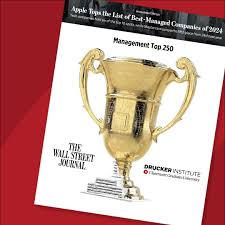 The EEA provides a human capital analytics tool and training to professionals and organizations that seek to master these practices for their own organizations or clients. The ICEE provides a turnkey solution for organizations not ready to conduct the process themselves.
The EEA provides a human capital analytics tool and training to professionals and organizations that seek to master these practices for their own organizations or clients. The ICEE provides a turnkey solution for organizations not ready to conduct the process themselves.The Enterprise Engagement Alliance’s learning program is focused on professionals and solution providers who wish to independently bring these practices to their organizations or clients. The aim is to create a community of professionals bringing these tools and services to their organizations and clients.
For companies that need turnkey support, the International Center for Enterprise Engagement, now run by Darwin Hanson, Founder of TM Evolution, a 19-year-old total rewards, compensation, and human capital technology analytics firm, will be the first independent company to use the enterprise engagement framework for those seeking turnkey support. ICEE combines TM Evolution’s own expertise on compensation and human capital analytics to help organizations assess the impact of current costs of efforts to engage people, including total rewards strategies, compensation, incentives, rewards, recognition, loyalty, motivational events, promotions, and more.
Bruce Bolger
Founder, Enterprise Engagement Alliance
520 White Plains Rd., Suite 500
Tarrytown NY 10591
914-591-7600, ext. 230
Bolger@TheEEA.org


